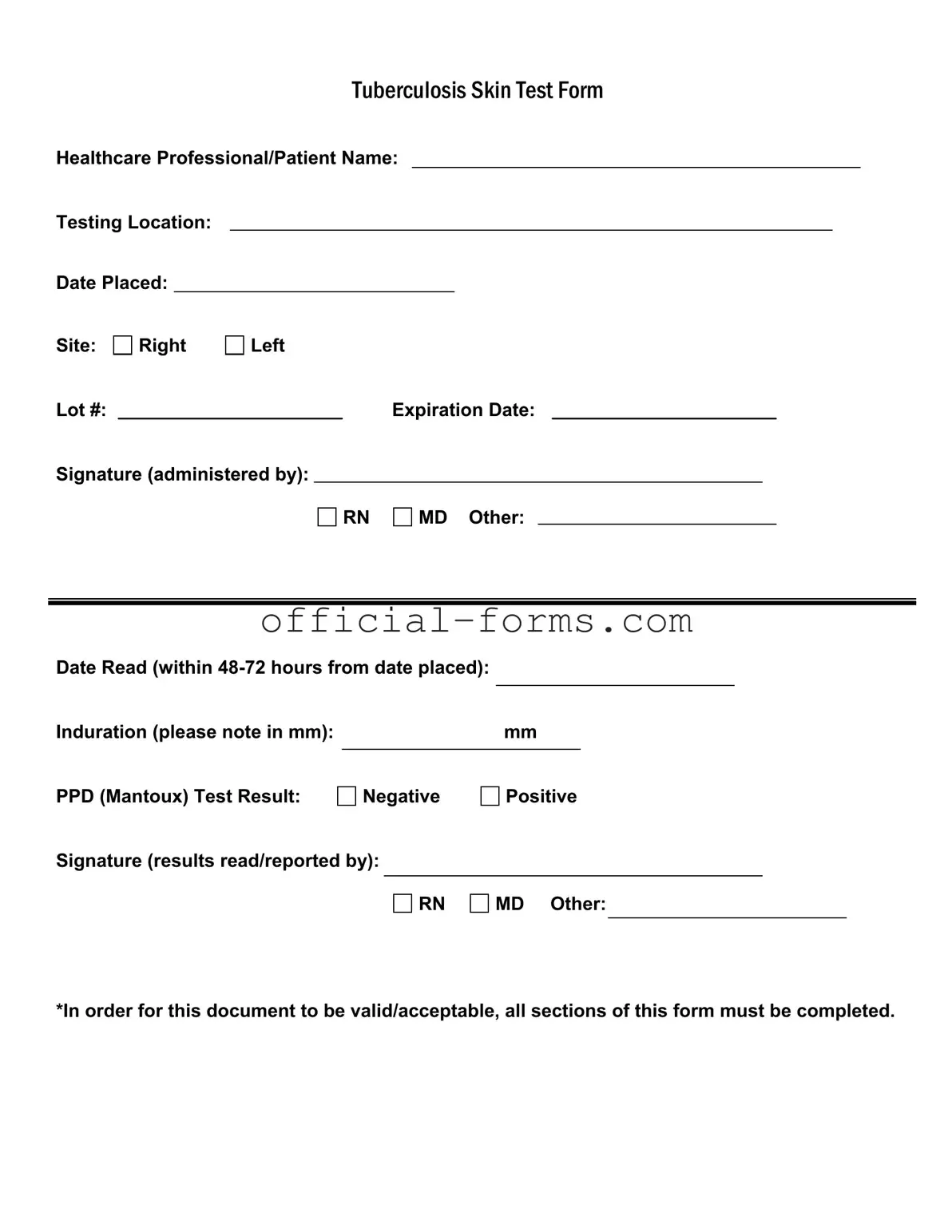Filling out the Tuberculosis (TB) Test form can seem straightforward, but many people make common mistakes that can lead to complications. One frequent error is not providing complete information in all sections of the form. Each part is essential for the form to be valid, and omitting even a single detail can render the document unacceptable.
Another mistake often seen is failing to clearly indicate the testing location. This detail is crucial for tracking the results and ensuring proper follow-up. If the location is unclear, it may cause confusion later on.
Many individuals also forget to include the date when the test was placed. This date is important because the results need to be read within 48 to 72 hours. Without this information, it becomes challenging to determine if the test was conducted correctly.
People sometimes neglect to specify the site of the test, whether it was on the right or left arm. This specification is necessary for accurate record-keeping and to ensure that the results correspond to the correct location.
Another common oversight involves the lot number and expiration date of the PPD (Purified Protein Derivative). These details are vital for ensuring that the test was administered using valid and effective materials. If these fields are left blank, it may raise questions about the reliability of the test results.
Signature lines can also be a source of error. Individuals may forget to sign the form or may not specify who administered the test. This oversight can lead to complications in verifying the test's authenticity.
When it comes to reading the results, some people fail to document the induration measurement accurately. It is essential to note the size of the induration in millimeters, as this measurement determines whether the test result is classified as negative or positive.
Another mistake is not recording the date when the results are read. This date is crucial for tracking the timeline of the test and ensuring that all procedures are followed correctly.
Finally, many individuals overlook the requirement to have the results reported by a qualified professional, such as an RN or MD. This step is critical, as it adds credibility to the results and ensures that they are interpreted correctly.
By being aware of these common mistakes, individuals can ensure that their TB Test forms are filled out accurately, leading to more reliable results and a smoother testing process.
